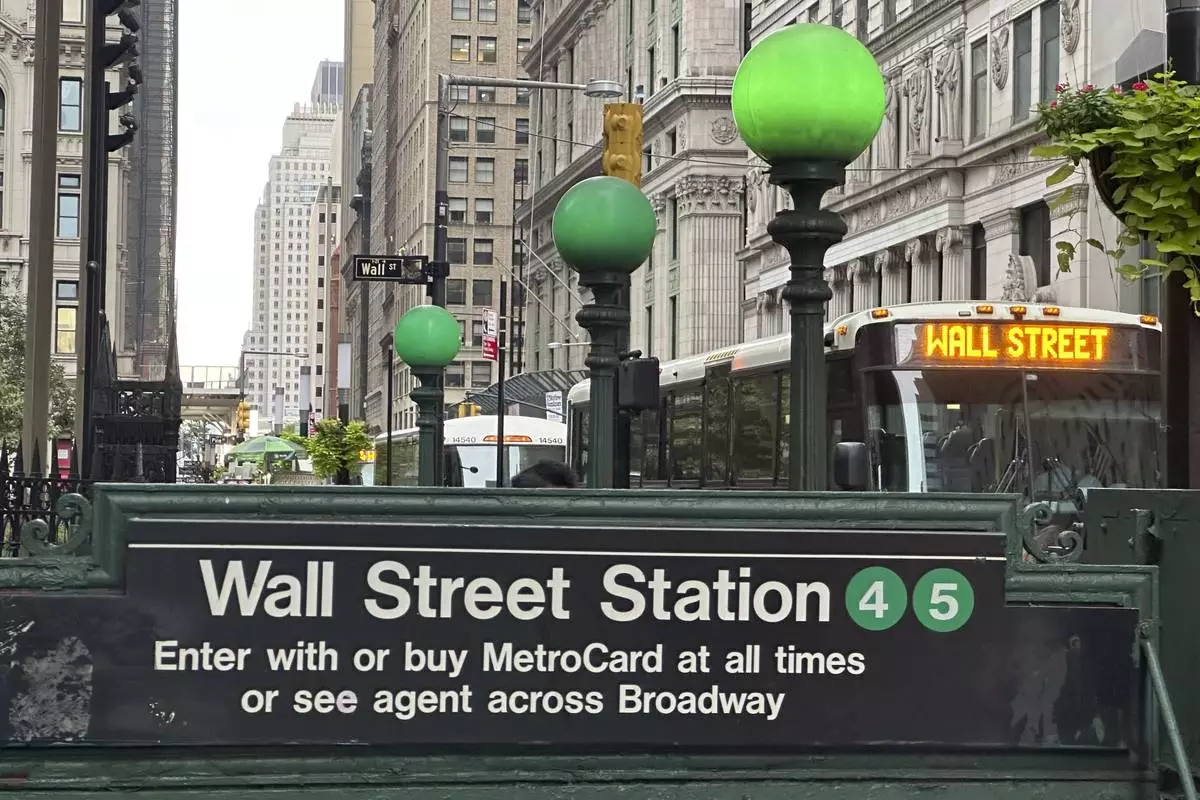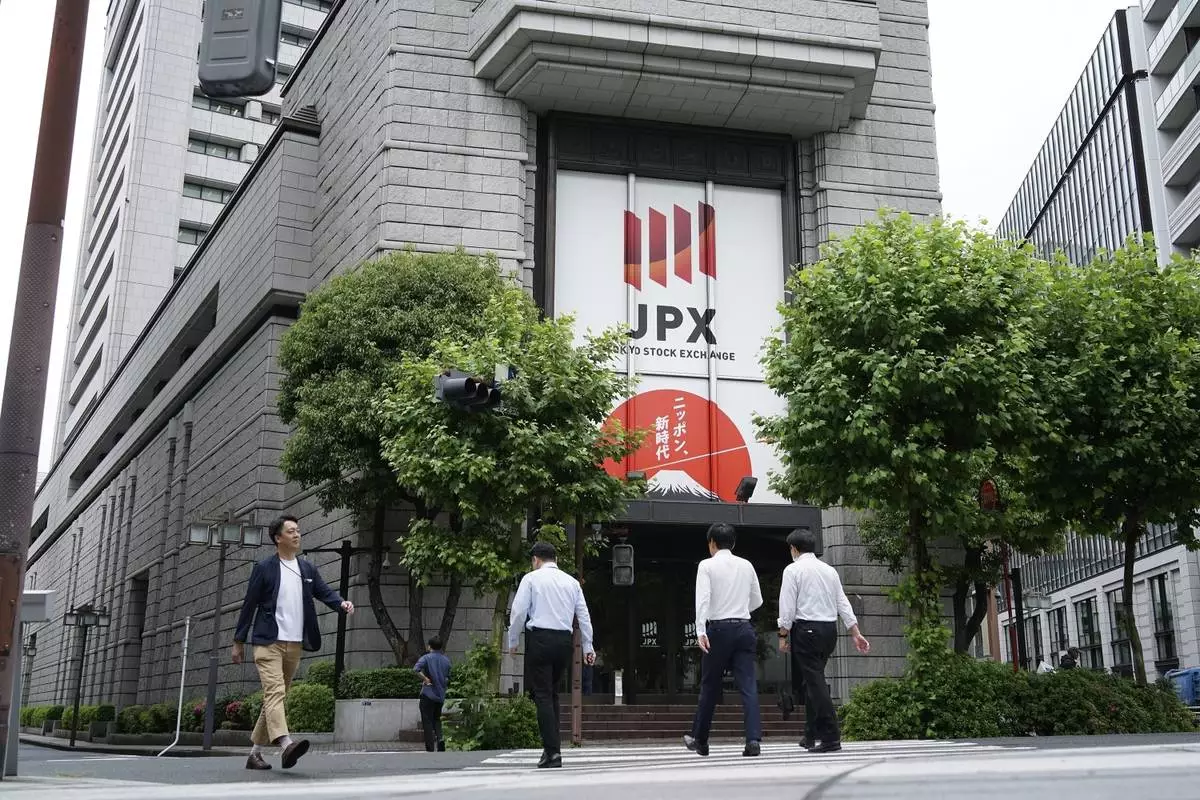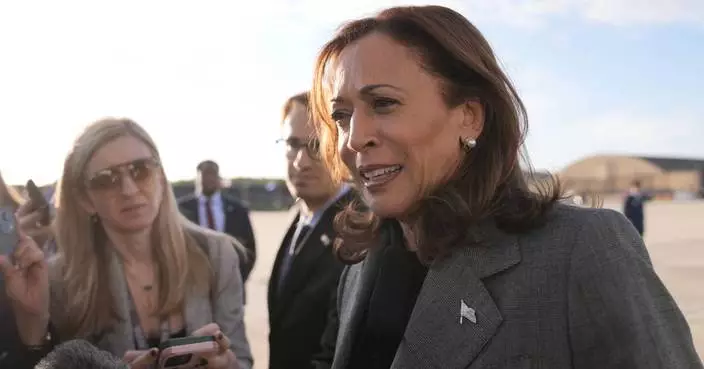WASHINGTON (AP) — With its larger-than-usual half-point cut to its key interest rate last week, the Federal Reserve underscored its belief that it's all but conquered inflation after three long years.
The public at large? Not so much.
Consumer surveys, including one released Friday by The Associated Press-NORC Center for Public Affairs Research, show that most Americans remain unhappy with the economy, still bruised by an inflation rate that hit a four-decade high two years ago as the economy rebounded from the pandemic recession.
Yet in the view of some economists, the shift toward steadily lower borrowing rates could eventually boost consumer sentiment. Inflation has sunk for more than two years and is nearly back down to the Fed's 2% target. Though that means overall prices are still rising, they're doing so much more slowly.
The costs of some high-profile consumer goods, from used cars to grocery prices, have actually been falling. Economic history suggests that a low, stable inflation rate, with prices rising only gradually, eventually leads Americans to adapt to higher price levels. One favorable factor is that average incomes are now rising faster than prices, allowing more households to afford necessities.
The issue remains a heated one in the political campaign. Seeking to capitalize on public discontent, former President Donald Trump has blamed the Biden-Harris administration's policies for having caused inflation to spike. Yet Friday's AP poll found that voters are now roughly split on who they think would better handle the economy, Trump or Vice President Kamala Harris. Back in June, an AP poll had found that six in 10 disapproved of President Joe Biden's economic record.
That is a sign that, at least seen through a political prism, Americans' economic views have begun to brighten.
Little noticed in a news conference Chair Jerome Powell gave Wednesday was his estimate that the Fed's preferred inflation gauge would amount to just 2.2% for August when the figure is released this week. That would be down dramatically from a peak of 7% two years ago.
Powell also provided a colloquial definition of the Fed's mandate to seek “price stability.”
“A good definition of price stability," he said, "is that people in their daily decisions, they’re not thinking about inflation. That’s where everyone wants to be — back to, ‘What’s inflation?’ Just keep it low, keep it stable.”
Powell did not suggest that the Fed had fully succeeded in that goal. He acknowledged that consumers are still “experiencing high prices, as opposed to high inflation,” which he said is “painful.” But, he added, “I think we’ve made real progress.”
Sofia Baig, an economist at the polling firm Morning Consult, noted that Americans still see high prices as a financial burden. According to Morning Consult surveys, she said, when most people think about inflation, they think about how much lower prices were two or four years earlier. Fed officials and economists, by contrast, typically measure success in shorter-term durations — prices compared with a year ago, six months ago, even one month ago.
Over time, Baig said, consumers typically adjust to higher prices, particularly as their incomes catch up.
“You hear your grandparents talking about a bottle of Coke costing some egregiously low amount,” she said. “So inflation has always been happening, but, at a certain point you kind of take in the new prices and get used to it.”
Some of the gloom surrounding the economy has likely been heightened by the political attacks Trump and his Republican allies have waged for three years against the Biden-Harris administration, focused relentlessly on inflation. Many economists have noted that high inflation was a global phenomenon after the pandemic, caused largely by shortages of parts and labor, and was just as severe overseas as it was in the United States.
According to the University of Michigan's consumer sentiment survey, Democrats' outlook on the economy is more positive now than on the eve of the pandemic, in February 2020. Sentiment among Republicans, in contrast, has plunged by nearly two-thirds. Among independents, sentiment is still 40% below its pre-pandemic level.
Baig also cites the influence of social media, which has been rife with photos and videos of consumers pointing to exorbitant prices, for dimming Americans' view of the economy.
Though average prices won't likely return to where they were before the pandemic, slower inflation can help speed the adjustment process. Groceries still cost much more than they did three years ago, but in the past 12 months they've risen just 0.9%. The average cost of a gallon of gas has plummeted 17% from a year ago, to $3.22, according to AAA. In 14 states it's below $3. The cost of a new rental lease is down 0.7% in the past year, figures from Apartment List show.
And in 2023, median household income rose 4% faster than prices, the first gain in inflation-adjusted income since the pandemic, the Census Bureau reported this month.
Some Americans do see prices as settling down. Tisha Deloney of Arlington, Virginia, said she was initially miffed when her company provided a smaller cost-of-living adjustment for this year of about 3%, down from the 8% she remembers when inflation was peaking. But when her rent rose two months ago, it ticked up by a much smaller amount than it had in previous years.
“It felt more normal,” said Deloney, 38. “I definitely feel like inflation has come down. It feels better.”
Some early signs suggest that other people may soon feel the same way. Consumer sentiment rose in September for a third straight month, according to preliminary figures from the University of Michigan. The brighter outlook was driven by “more favorable prices as perceived by consumers” for cars, appliances, furniture and other long-lasting goods.
Since 2022, Morning Consult has surveyed shoppers on whether the costs of goods and services they've bought have been pricier than they expected. That measure has tumbled from two years ago, a sign that many Americans are adjusting to higher costs.
And while people continue to cite inflation as a leading concern, according to surveys, they now expect it to remain low in the coming years. The Michigan survey found that expectations for inflation a year from now fell in September for the fourth straight month to 2.7%. That was the lowest such figure since December 2020 and consistent with pre-pandemic levels.
On Friday, Christopher Waller, an outspoken member of the Fed’s governing board, suggested in an interview on CNBC that there's even a risk that inflation could fall well below the central bank's 2% target in the coming months — a key reason, Waller said, that he supported last week's half-point rate cut.
Waller noted that, excluding volatile food and energy costs, “core” prices rose at just a 1.8% annual rate in the past four months.
If inflation kept cooling at its current pace, Waller said, he could support additional half-point rate cuts.
“Inflation," he said, “is softening much faster than I thought it was going to.”

FILE - A motorist fills up the gasoline tank of a vehicle at a Costco warehouse Aug. 22, 2024, in Parker, Colo. (AP Photo/David Zalubowski, File)

FILE - A row of unsold 2024 Atlas utility vehicles is shown July 28, 2024, at a Volkswagen dealership in Denver. (AP Photo/David Zalubowski, File)











